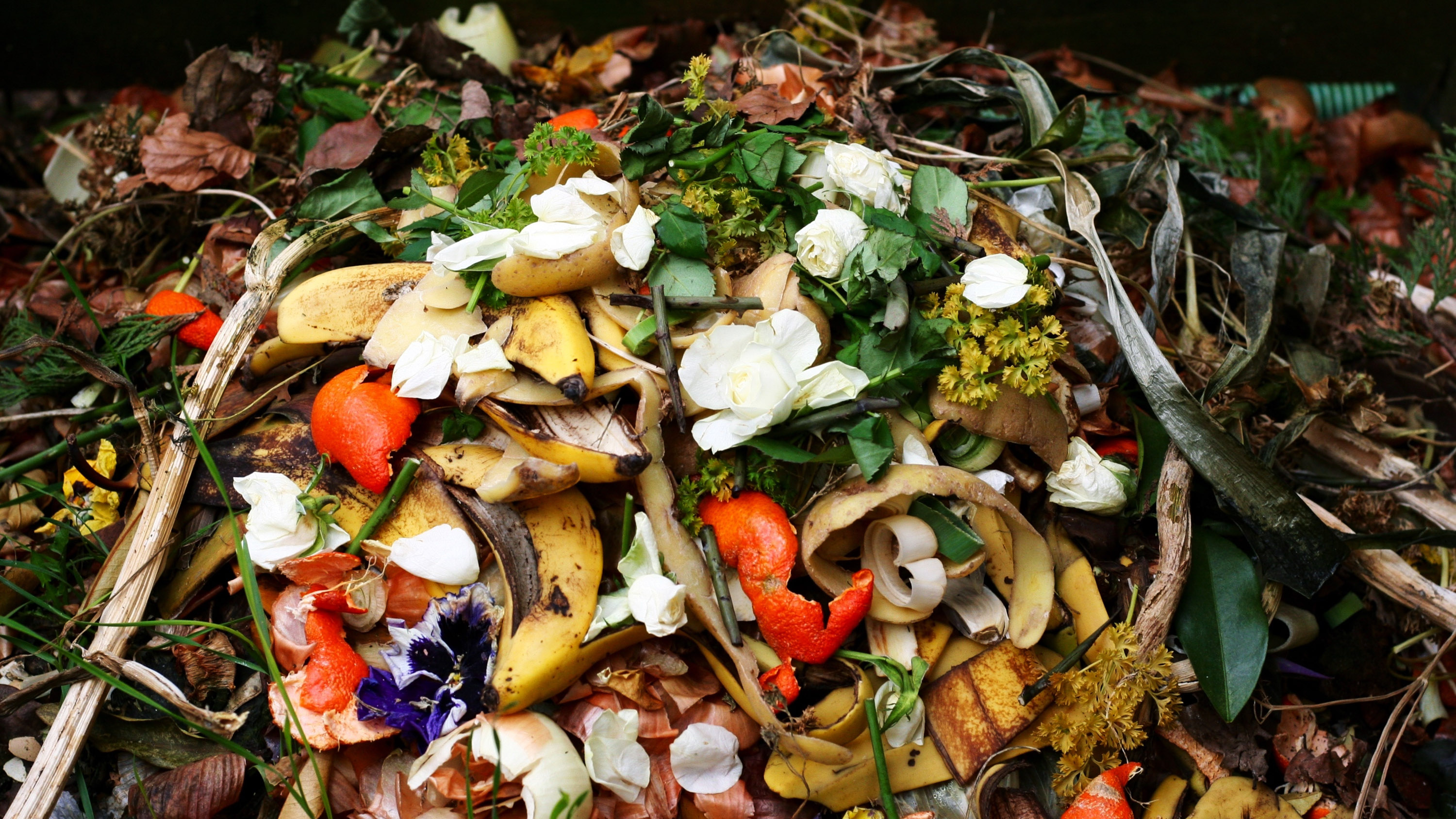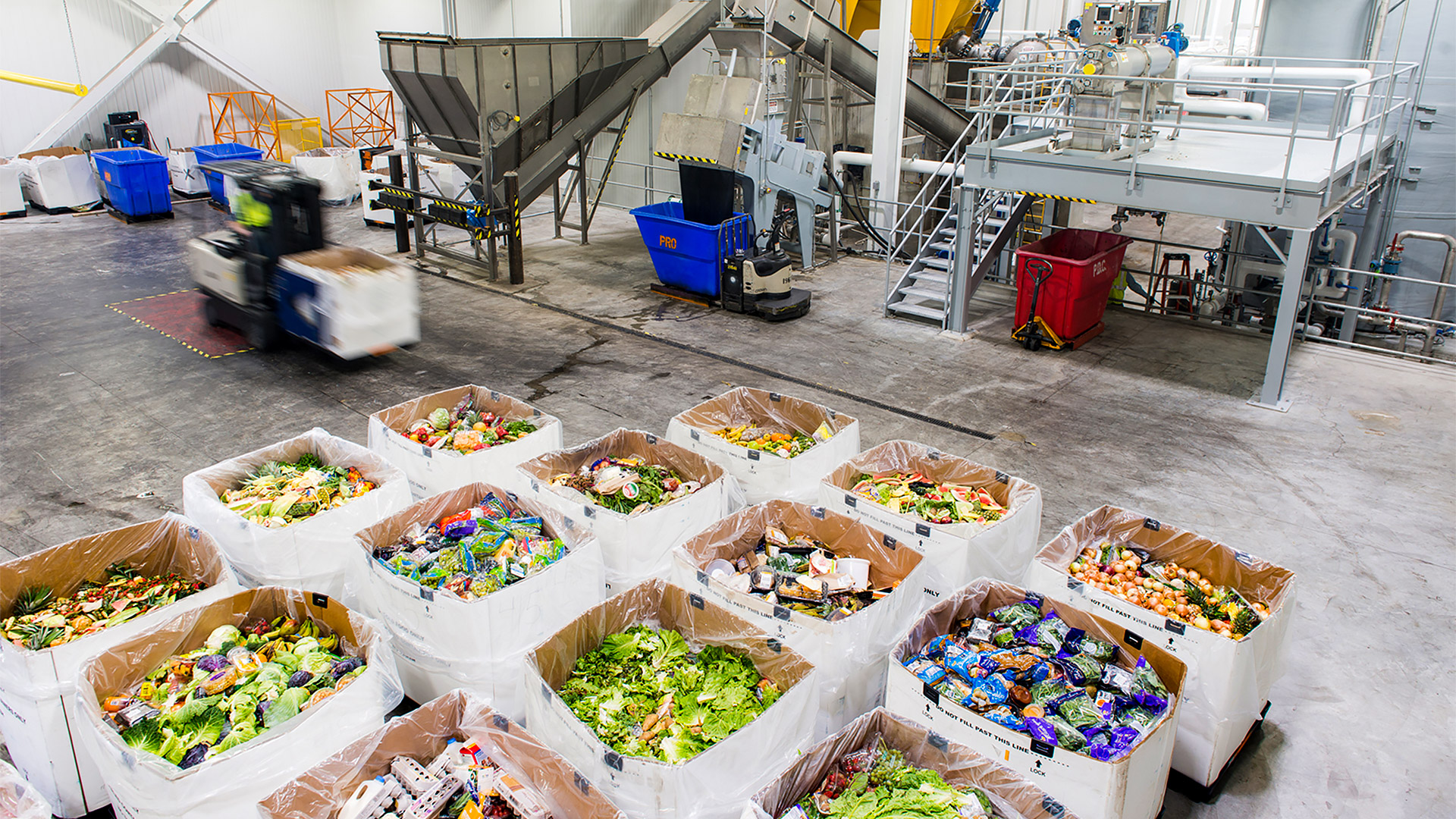These companies want to tackle food waste with microbes
There’s always money in the grocery store dumpster.

Some people might look in a grocery store’s dumpster and see garbage. But others are starting to see dollar signs.
New facilities are popping up in the US to help tackle food waste using a process called anaerobic digestion, which uses microbes to break down organic materials. Divert, a company working to address food waste, announced today that it’s received a $1 billion funding agreement to help build and deploy this technology.
Divert’s new agreement with the energy infrastructure company Enbridge will help the company build and deploy new facilities across the US. If all goes according to plan, Divert could manage a total of 5% of food waste in the US by the end of the decade, says CEO and cofounder Ryan Begin.
About 60 million metric tons of food waste is generated just in the US each year, amounting to about 30% of the total food supply, according to the US Department of Agriculture. The global total is close to 1 billion metric tons. Today, that wasted food typically goes on to landfills, where it decays and produces methane, a powerful greenhouse gas. Many landfills have systems in place to capture the gases produced, but they may capture only around 60% of the methane emitted.
“We need to handle this waste somehow,” says Meltem Urgun Demirtas, head of the bioprocesses and reactive separations group at Argonne National Laboratory. In addition to helping prevent methane emissions, processing food waste the right way can even generate energy and products like fertilizers.
One option, called anaerobic digestion, is widely used today in wastewater treatment plants around the world. Now more places are using it to handle other waste, like manure on farms and discarded food. Germany leads the world in anaerobic digesters: the country runs about 10,000 such reactors today. In the US there are just over 2,000, and only a few hundred are used for food waste.
Here’s how it works. When companies get food waste from grocery stores or food distributors, they basically liquefy it, turning it into a “trashy slurry,” Begin says. The rubber bands, stickers, and plastic packaging are removed, and the slurry is then shepherded through the rest of the process. The star of the show is the community of microbes seeded into the reactor, a bit like a sourdough starter. They gobble up the food waste and transform the watery mixture into the final products: biogas and a solid material called digestate, which can be added to soil.
“We really are microbe farmers,” says Shawn Kreloff, CEO at Bioenergy DevCo, a company that builds and operates anaerobic digesters. Keeping the microbes happy means making sure the conditions are just right, within tight ranges of temperature and acidity. They also don’t like their food to be too salty, says Christine McKiernan, chief engineering and construction officer at Bioenergy DevCo.
Composting might be a more familiar process for dealing with food waste—it also employs microbes, and it also produces a solid material that’s packed with nutrients. The big difference is that composting happens in the presence of oxygen, so microbes break down the waste into dirt while emitting mostly carbon dioxide.
If a compost pile doesn’t get mixed enough, its microbes will be deprived of oxygen. It will naturally start going through anaerobic activity, forming methane: bad news for composting facilities that are often open to the atmosphere. Over short time spans, methane is about 80 times more powerful as a greenhouse gas than carbon dioxide.
"We need to handle this waste somehow."
Meltem Urgun Demirtas
For companies interested in anaerobic digestion, however, producing methane is the goal. Because these facilities are sealed up, the mixture of methane and carbon dioxide produced by microbes, called biogas, can be captured and purified into biomethane, which can be used as a replacement for natural gas.
Some producers use this biomethane (also called renewable natural gas) or the unpurified biogas on-site, burning it to power their facilities. Others sell it to utilities, so it’s injected into existing natural-gas pipelines and used to generate electricity in power plants, or used in homes for heating or cooking.
On the whole, anaerobic digestion could provide a climate benefit, but exactly how much the process reduces emissions will depend a lot on the details, says Troy Hawkins, a researcher at Argonne National Laboratory who studies the environmental effects of energy systems.

Divert works with over 5,000 retail stores across the US to gather food waste and process it using anaerobic digestion. The company currently operates 10 digester sites in the US and uses tracking systems to help understand why certain food ends up getting wasted in the first place, Begin adds.
Deploying anaerobic digesters isn’t cheap: a full-size facility can cost tens or hundreds of millions of dollars. Designing new facilities can also take time, because most are customized for particular processing tasks. An on-site facility for an ice cream factory might look different from one that can accept everything from grocery store waste like expired frozen pizzas and old apples to used cooking oils from restaurants, McKiernan says.
Over 11,000 additional sites in the US are ripe for deploying anaerobic digesters, from wastewater facilities to food waste sites, according to a 2014 report from US federal agencies. If all those facilities were built, they could generate enough energy to power 3 million homes. The American Biogas Council, an industry trade group, puts the number at 15,000 sites, which would require about $45 billion to build altogether.
It won’t be cheap and it won’t be quick, but anaerobic digesters could be a significant destination for food waste in the future, helping to turn one person’s table scraps into another person’s energy.
Correction: An earlier version of this article misattributed a quote from Shawn Kreloff.
Deep Dive
Climate change and energy
What’s coming next for fusion research
A year ago, scientists generated net energy with a fusion reactor. This is what’s happened since then.
Is this the most energy-efficient way to build homes?
Airtight and super-insulated, a passive house uses around 90% less energy.
The University of California has all but dropped carbon offsets—and thinks you should, too
It uncovered systemic problems with offset markets and recommended that the public university system focus on cutting its direct emissions instead.
Super-efficient solar cells: 10 Breakthrough Technologies 2024
Solar cells that combine traditional silicon with cutting-edge perovskites could push the efficiency of solar panels to new heights.
Stay connected
Get the latest updates from
MIT Technology Review
Discover special offers, top stories, upcoming events, and more.